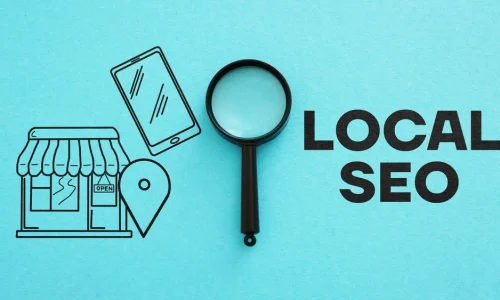What Does the SEO Acronym Stand For? A Beginner’s Guide to Search Engine Optimization

In 2025, Google processes approximately 8.5 billion searches daily, equating to about 99,000 searches every second. This staggering volume underscores the importance of standing out in search results. Notably, the top three organic search results collectively receive 68.7% of all clicks, with the #1 result alone capturing 27.6%
So, what does the acronym SEO stand for? SEO, or Search Engine Optimization, is the practice of enhancing your website’s visibility in search engine results. In this beginner’s guide, we’ll delve into the fundamentals of SEO, its significance in today’s digital landscape, and how you can leverage it to boost your online presence.
What Does SEO Stand For?
If you’ve ever wondered, “What does the acronym SEO stand for?” the answer is simple: SEO stands for Search Engine Optimization. But what does that actually mean?
Let’s break it down word by word to understand the full form and its purpose:
- Search – This refers to how users explore the internet, typically by typing queries into platforms like Google, Bing, or Yahoo. Whether it’s a question, a product, or a service, users rely on search engines to find what they need.
- Engine – This represents the powerful tools behind search platforms that crawl, index, and rank content from all over the web. Google alone processes over 8.5 billion searches every day, making it the most dominant search engine in the world.
- Optimization – This is the key action. It involves improving your website’s content, structure, and relevance so it appears higher in search results. The goal is to make your website more appealing and accessible to both users and search engine algorithms.
So, in essence, Search Engine Optimization (SEO) is the process of making your website visible and valuable in search engine results. It’s how you ensure your audience finds you before they find your competitor.
Why Is SEO Important?
Imagine building the most beautiful website in the world, but no one knows it exists. That’s where SEO comes in. Search Engine Optimization is the secret sauce that helps your content get discovered by the right people at the right time.
Visibility Means Opportunity
In today’s digital-first world, visibility online is like owning prime real estate, but in search results. Every day, Google processes over 8.5 billion searches, and each search is a potential customer looking for a solution, product, or idea.
But here’s the catch: 75% of users never scroll past the first page of search results. That means if your website isn’t ranking on page one, you’re essentially invisible to most users. This is where SEO becomes your digital lifeline.
By optimizing your content and website structure, SEO helps you earn a spot at the top of search results, right where your audience is looking. More visibility means more clicks, more traffic, and more opportunities to convert casual browsers into loyal customers.
Whether you’re a small business, a blogger, or a global brand, ranking high in search results gives you a competitive edge. It’s not just about showing up, it’s about showing up when it matters most.
Drives Organic (Free) Traffic
One of the biggest advantages of SEO is its ability to drive organic traffic, visitors who find your website through unpaid search results. Unlike pay-per-click (PPC) ads, which stop generating leads the moment you stop funding them, SEO continues to deliver results long after the work is done.
Think of it this way: each well-optimized blog post or product page is like a 24/7 digital salesperson, attracting, informing, and converting visitors without costing you a cent per click.
In fact, according to BrightEdge, organic search drives over 53% of all website traffic, making it the #1 source of high-intent visitors. These are users actively looking for something you offer, whether it’s a product, service, or solution.
With consistent SEO efforts, your content can show up in search results for months or even years. That means more visibility, more trust, and more leads, without a constant ad budget.
Pro Tip: Target long-tail keywords (e.g., “best eco-friendly skincare products”) to attract niche traffic with high conversion potential.
Builds Credibility and Trust
Ever notice how you instinctively trust the websites that appear at the top of Google’s results? You’re not alone. Users often associate high rankings with authority, reliability, and professionalism, and that’s exactly what SEO helps you build.
Google’s algorithm favors websites that demonstrate expertise, authoritativeness, and trustworthiness (known as E-A-T). So when your site consistently appears in search results, it sends a strong signal to users (and search engines) that your content is credible and worth their time.
Elements like:
- High-quality, helpful content
- Secure browsing (HTTPS)
- Fast-loading pages
- Mobile responsiveness
- Positive user experiences
…all contribute to building trust, and they’re core components of modern SEO.
In fact, according to a survey by Search Engine Journal, nearly 70% of users trust search engines to deliver credible results. That means SEO isn’t just about traffic, it’s about perception. A trusted website builds loyal audiences, attracts quality backlinks, and earns word-of-mouth referrals.
Pro Tip: Add real customer reviews, media mentions, and expert author bios to strengthen your site’s authority.
Long-Term Marketing ROI
One of the most compelling reasons to invest in SEO is its long-term return on investment (ROI). Unlike paid ads that vanish the moment your budget runs dry, SEO builds momentum over time and keeps delivering results long after the initial effort.
While SEO doesn’t offer overnight success, it’s a strategic asset that compounds. Once your content ranks well, it can consistently attract high-intent traffic for months or even years, without any additional spending.
According to a report by Ahrefs, 63% of marketers say SEO provides the best ROI of any marketing channel, surpassing email, paid search, and social media. The reason? SEO helps you reach users who are actively searching for what you offer, meaning they’re more likely to convert.
It’s a sustainable growth engine:
- Lower customer acquisition costs over time
- Evergreen content that pays dividends
- Reduced reliance on paid traffic
Pro Tip: Start with cornerstone content, high-value, long-form pages on important topics, to anchor your SEO and attract backlinks over time.
Real-World Example of SEO Impact
To truly understand the power of SEO, let’s look at a real-world example.
A small home décor brand based in Austin, Texas, was struggling to gain traction online despite having a beautiful product line. They decided to invest in SEO by optimizing their website for keywords like “boho wall art” and “eco-friendly home accessories.” They also started publishing helpful blog content like “How to Style a Boho Living Room on a Budget.”
Within 6 months:
- Their organic traffic increased by 312%
- Product pages started ranking in the top 5 for target keywords
- Monthly revenue from organic search tripled, all without spending a dollar on ads
This success wasn’t due to luck. It was the result of smart SEO: keyword research, content optimization, technical improvements, and a focus on user intent.
Takeaway? SEO isn’t just for big corporations. With the right strategy, even small businesses can compete, and win, in search results.
Pro Tip: Combine SEO with content marketing to create a steady pipeline of organic traffic and leads.
Common SEO Abbreviations and Terms You Should Know
If you’re new to SEO, the jargon can feel overwhelming. But don’t worry, once you understand these key abbreviations, the big picture starts to make a lot more sense. Here are a few essential SEO terms and acronyms every beginner should know:
SERP – Search Engine Results Page
This is the page you see after entering a search query into a platform like Google or Bing. The SERP displays both organic results (powered by SEO) and paid ads (PPC). Ranking high on the SERP means better visibility and more clicks.
CTR – Click-Through Rate
CTR measures the percentage of users who click on your link after seeing it in search results. For example, if 100 people see your page on the SERP and 10 click it, your CTR is 10%. Higher CTR often means your headline and meta description are compelling and relevant.
DA – Domain Authority
Domain Authority (a term popularized by Moz) is a score from 1 to 100 that predicts how well a website will rank on search engines. A higher DA generally reflects a stronger backlink profile and trustworthy content. While not a Google metric, it’s widely used in SEO strategy.
PPC – Pay Per Click
PPC refers to paid advertising where you’re charged every time someone clicks your ad, unlike SEO, which focuses on earning free, organic traffic. Think of SEO as a long-term investment, while PPC is more like renting instant traffic.
How Does SEO Work? A Quick Overview
Search Engine Crawling and Indexing
Crawling is the first step. Search engines like Google use bots (also known as spiders or crawlers) to scan the internet and discover new or updated content. These bots follow links from one page to another and gather data from websites across the web.
Once content is discovered, it moves to the next phase: indexing. During this process, the search engine analyzes and stores the content in its database, known as the search index. Here, it evaluates elements like keywords, freshness, page structure, and metadata to understand what the page is about.
When a user performs a search, the engine sifts through its vast index to find the most relevant results based on the query, a process that also considers factors like backlinks, which you can analyze in Google Search Console.
Ranking Factors: Keywords, Content, Backlinks, and Page Speed
Once your page is indexed, search engines determine where it should appear in search results using a complex set of ranking factors. These elements help decide how relevant and useful your content is to a user’s search query. Some of the most influential factors include:
Keywords: Keywords are the words or phrases users type into search engines. Using relevant keywords throughout your content, especially in headings, meta tags, and naturally in the body, helps search engines understand what your page is about. However, keyword stuffing (overusing keywords unnaturally) can harm your rankings.
Content Quality: High-quality content that provides value to users is one of the strongest ranking signals. Search engines prioritize content that is original, informative, well-structured, and written for people, not just bots. Regularly updated content also performs better over time.
Backlinks: Backlinks are links from other websites pointing to your site. They act as “votes of confidence,” signaling to search engines that others trust your content. The quality and authority of the sites linking to you matter more than sheer quantity.
Page Speed: Website loading speed plays a critical role in both user experience and SEO. Search engines favor fast-loading pages, especially on mobile devices. Slow websites can lead to higher bounce rates and lower rankings.
White Hat vs. Black Hat SEO Basics
When it comes to SEO, not all strategies are created equal. Techniques are generally divided into two categories: white hat SEO and black hat SEO. Understanding the difference is crucial for building a sustainable online presence.
White Hat SEO: White hat SEO refers to ethical, search-engine-approved techniques focused on providing real value to users. These practices align with search engine guidelines and aim to improve user experience while boosting visibility. Common white hat strategies include:
- Creating high-quality, original content
- Using relevant keywords naturally
- Improving site speed and mobile responsiveness
- Earning backlinks through outreach and valuable resources
- Ensuring a clean, crawlable website structure
Black Hat SEO: Black hat SEO involves manipulative tactics designed to trick search engines into ranking content higher than it deserves. These methods violate search engine policies and can lead to severe penalties, including being deindexed (removed) from search results. Common black hat techniques include:
- Keyword stuffing
- Cloaking (showing different content to users and search engines)
- Buying or spamming backlinks
- Hidden text or links
- Using duplicate or scraped content
On-page, off-page, and technical SEO
To fully optimize a website for search engines, SEO is typically broken down into three main categories: on-page, off-page, and technical SEO. Each plays a distinct role in improving your site’s visibility and performance.
On-Page SEO: On-page SEO refers to everything you control directly on your website. This includes:
- Optimizing titles, headings, and meta descriptions
- Using relevant keywords naturally
- Structuring content for readability
- Adding internal links
- Using alt tags for images
The goal is to make your content user-friendly and easy for search engines to understand.
Off-Page SEO: Off-page SEO focuses on building your site’s authority and reputation through external efforts. The most common practice is earning backlinks from reputable websites. Other elements include:
- Social media engagement
- Influencer collaborations
- Online mentions (brand building)
These signals help search engines see your site as trustworthy and relevant.
Technical SEO: Technical SEO ensures that your website is technically sound and accessible to search engine crawlers. This includes:
- Fast page load times
- Mobile optimization
- Secure connections (HTTPS)
- XML sitemaps
- Clean site architecture
Without proper technical SEO, even the best content might not get properly indexed or ranked.
Key Components of Effective SEO
Successful SEO isn’t about using a single tactic, it’s about combining several key elements to create a strategy that delivers consistent results. Below are the core components that make up an effective SEO strategy:
1. Keyword Research: Keyword research is the foundation of SEO. It involves identifying the words and phrases your target audience types into search engines. By understanding search intent, you can create content that directly addresses what users are looking for. Tools like Google Keyword Planner, Ahrefs, or Ubersuggest help discover high-volume, low-competition keywords to target.
2. Content Creation: Content is what brings users to your site. High-quality, relevant, and original content not only helps you rank better but also builds trust with your audience. SEO-friendly content should:
- Answer specific questions
- Be structured with headings and subheadings
- Include keywords naturally
- Provide clear value and encourage engagement
Regular blogging, product descriptions, and landing pages are all important formats.
3. Technical SEO: Technical SEO ensures that your website is easy to crawl, index, and navigate for both users and search engines. This includes:
- Improving site speed
- Fixing broken links
- Using proper URL structures
- Implementing structured data (schema markup)
- Maintaining a secure (HTTPS) and mobile-friendly site
Without a solid technical foundation, other SEO efforts may fall short.
4. Link Building: Link building is the process of acquiring backlinks, links from other websites to yours. These act as “votes of confidence” and are one of Google’s top ranking factors. Strategies include:
- Guest posting
- Digital PR
- Creating share-worthy content
- Building relationships with other content creators
5. User Experience (UX) and Mobile Optimization: Search engines prioritize websites that offer a smooth, user-friendly experience, especially on mobile devices. A good user experience includes:
- Fast load times
- Easy-to-read layouts
- Intuitive navigation
- Mobile responsiveness
Final Thoughts: Getting Started with SEO
By now, you know the answer to the common question: What does the acronym SEO stand for? It stands for Search Engine Optimization, a strategic, multi-faceted approach to helping your website rank higher on search engines, attract the right audience, and grow organically.
But SEO is more than just a buzzword. It’s a long-term, data-driven strategy that blends technical knowledge, creative content, and ongoing refinement. Whether you’re a small business owner, content creator, or marketing professional, understanding and implementing SEO can unlock sustainable online growth.
Getting started may seem overwhelming, but you don’t have to go it alone. At Webcazador, we specialize in crafting tailored SEO strategies that help your business rank, reach, and resonate.
Frequently Asked Questions
SEO is a long-term strategy. While some improvements can be seen within a few weeks, it generally takes 3 to 6 months to notice significant changes in traffic and rankings, depending on competition, website authority, and content quality.
It depends on your goals. SEO offers long-term, cost-effective traffic that builds over time, while paid ads provide immediate visibility but require continuous budget. Many businesses use both for optimal results.
Yes, basic SEO can be done with free tools and tutorials, especially for small websites. However, professional SEO services can help scale efforts, fix technical issues, and achieve competitive rankings faster.
Yes. Whether you run an e-commerce store, local service, blog, or B2B company, SEO can help you reach your target audience by improving visibility for relevant search queries.
Google uses a complex algorithm that evaluates hundreds of factors, including relevance, content quality, page speed, backlinks, and user behavior. Sites that best match the intent of the user’s query tend to rank higher.
Anyone with an online presence should care about SEO. This includes:
1. Small business owners who want to attract local customers without relying heavily on paid ads
2. Bloggers and content creators looking to grow their audience organically
3. eCommerce store owners who want more product visibility and higher conversion rates
4. Freelancers and service providers aiming to build authority in their niche
5. Marketing professionals who need to improve brand awareness and traffic
6. Nonprofits and educational sites seeking greater reach for their missions




